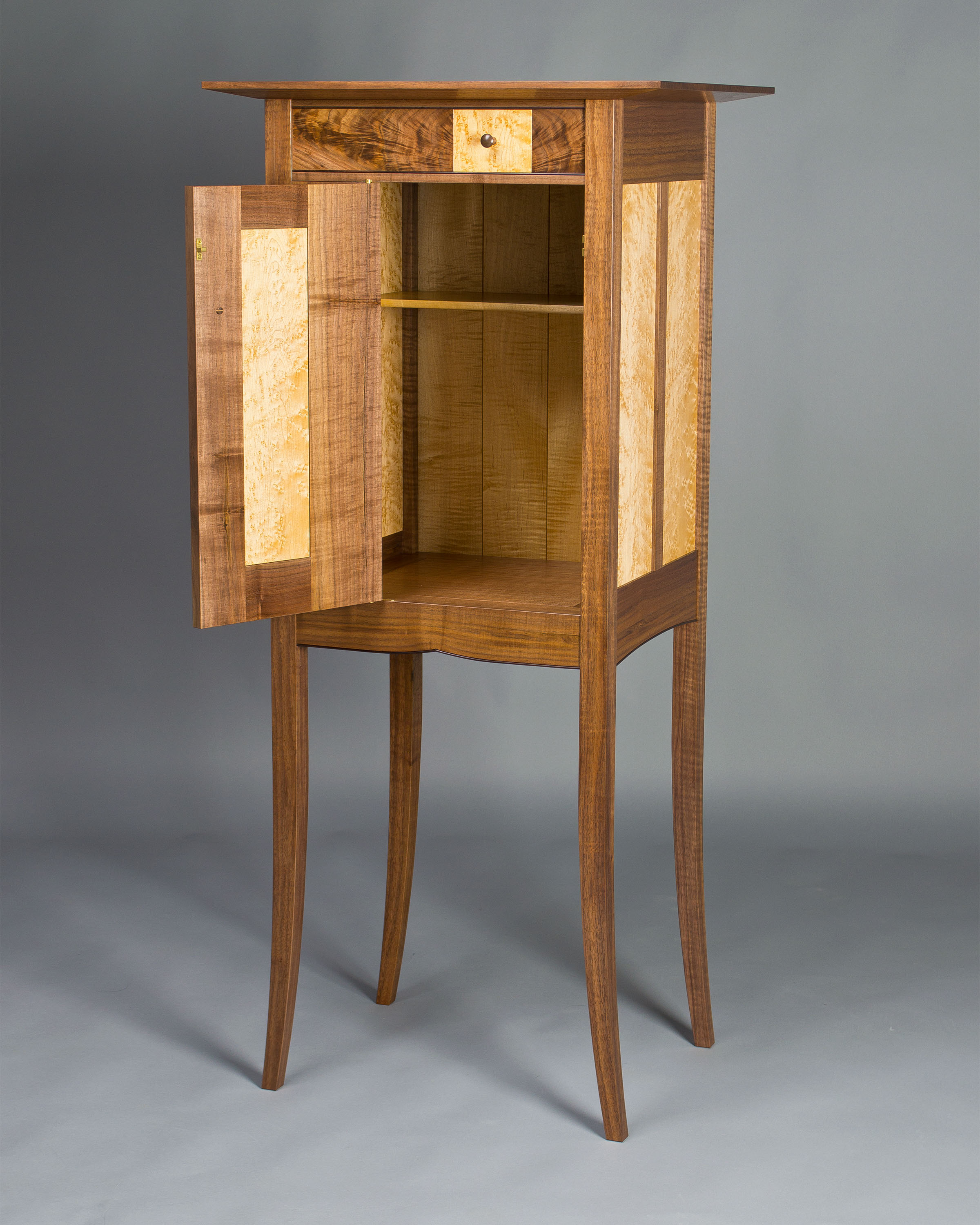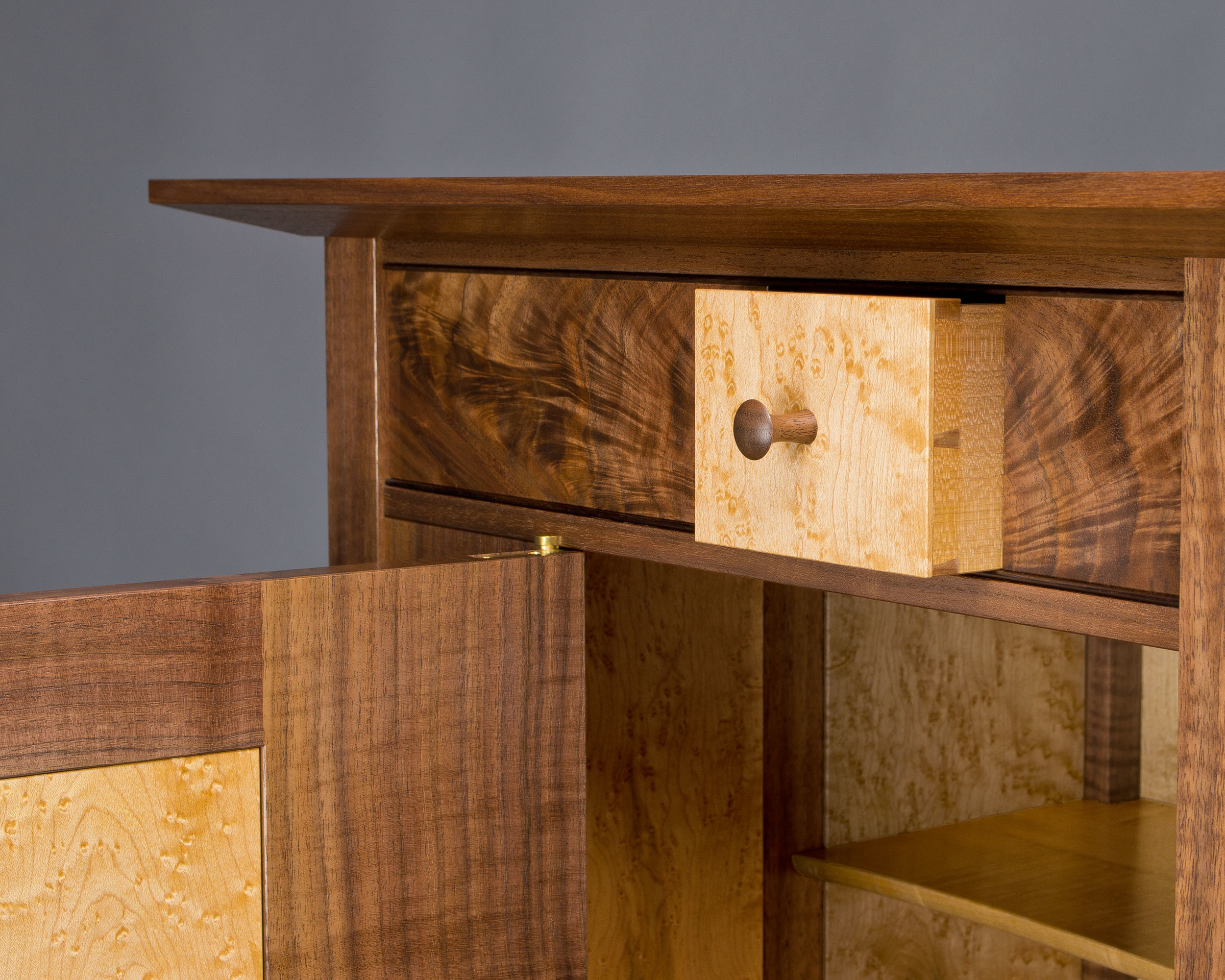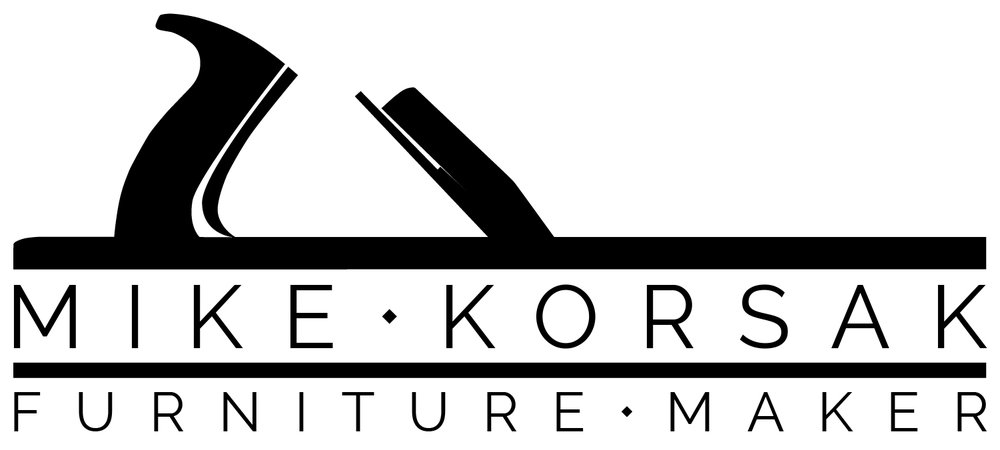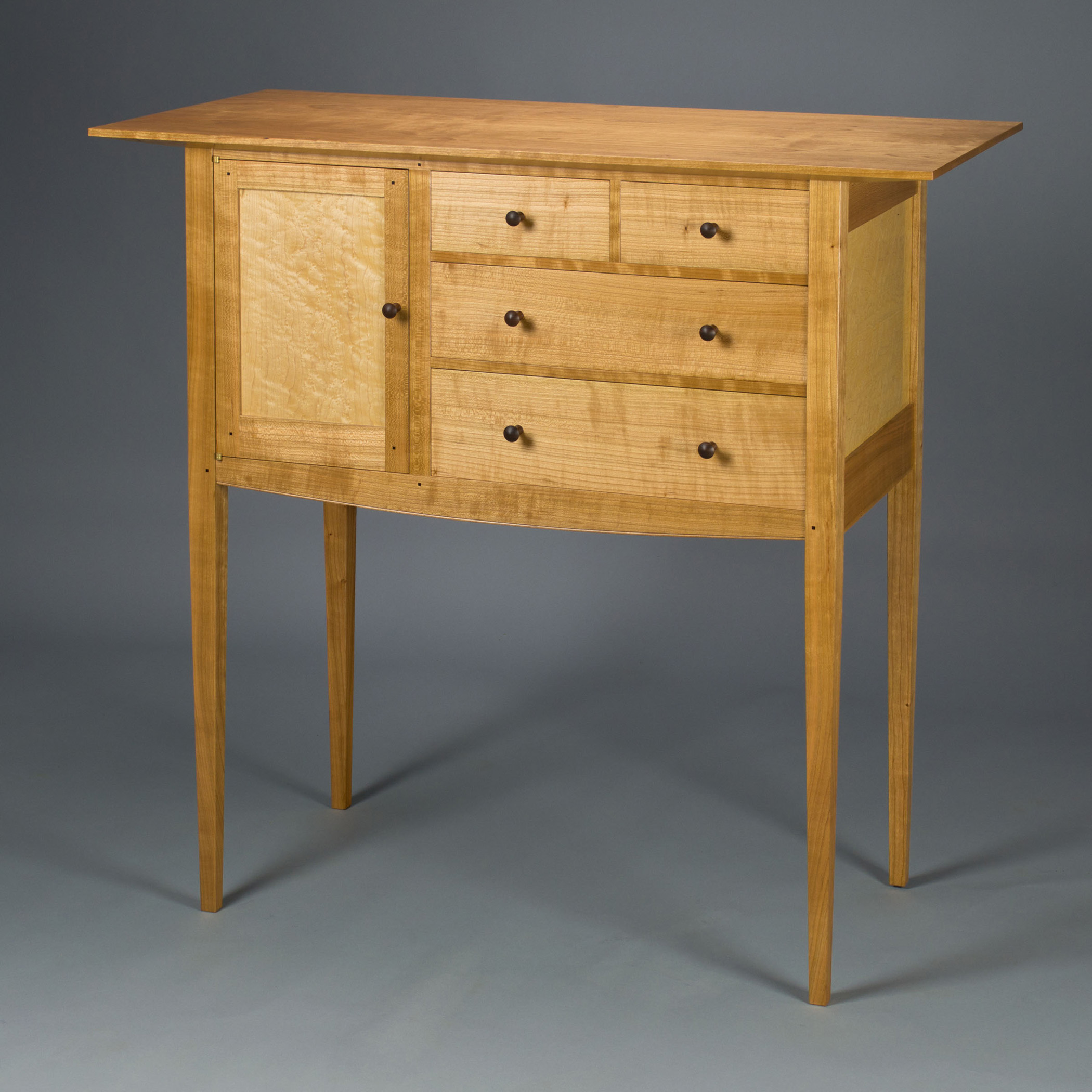Here's a sideboard from a few years ago, made of cherry and birds eye maple. I call it 60th Sideboard.
A Visit With...Gam Glams
Details of one of my pieces from a few years ago: Gam Glams.
First Prize in Craft at Art of the State!
I was honored this past Sunday to receive First Prize in Craft at The State Museum of Pennsylvania for my walnut and birds eye maple cabinet.
Art of the State is a juried exhibition showcasing the talent, creativity and diversity of the state’s established and emerging artists. I was proud to have two pieces in this exhibit, selected from over 1,600 submissions.
The exhibit is open now until September 13th, and more information about visiting the State Museum of Pennsylvania can be found here.
Check it out... in Fine Woodworking
I'm not sure if it is out in stores yet, but for those of you who subscribe to Fine Woodworking magazine (as I do), you may have noticed that one of my pieces was included in the February 2015 issue. The piece, 60th Sideboard, is part of the Reader's Gallery section of the magazine.
How this piece came to be featured in the magazine was particularly gratifying in that Fine Woodworking magazine, or rather a person from the magazine, contacted me and asked if I would consider letting them use this piece in the Reader's Gallery. Typically, one would submit work unsolicited, but the fact that my work was sought out by such a well known magazine was...well...pretty fine.
If you don't get the chance to see the print version (which I'd recommend as it's sexier than the online version), here's a link to the online version at Fine Woodworking's website, which includes the short write-up.
Walnut and Maple Cabinet





I recently finished this cabinet and wanted to post some pictures. It is made of black walnut and maple (birds eye and curly), with a bit of East Indian rosewood used for the decorative beads.
The design started from a sketch, and I worked on it in CAD and then moved to full-scale drawings. I spent a lot of time working out the details, such as the top panels of crotch walnut that flank the single drawer, the mother of pearl inlay, the fixed stile to the left of the door. I also spent a fair amount of time on the curved legs – designing curves that were subtle, yet graceful. After many iterations on paper, I made a full size leg template which allowed for further refinement, and doubled as a pattern for shaping the legs later on.
To achieve the curves in the legs, I heated the bottom portion of the legs with steam then bent them over a form, a process called steam bending. After a week or more of drying, I shaped the legs to the template, starting with the bandsaw to rough out the shape, then refining with hand planes and spokeshaves.




